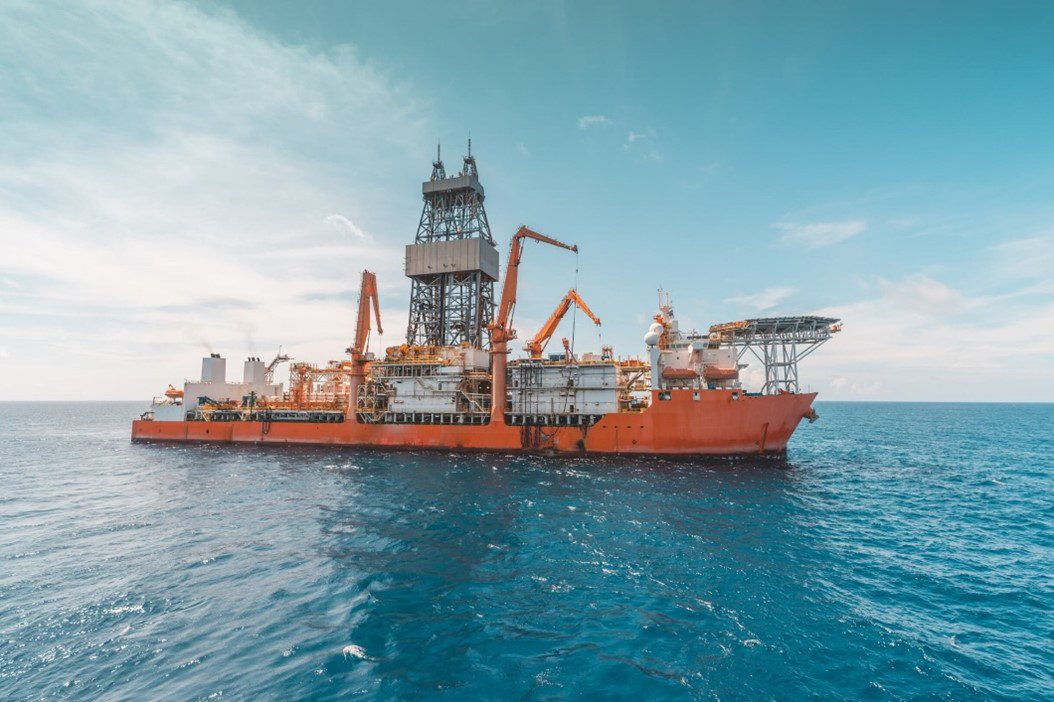Business depends on natural resources such as water, air, and forests. When these natural resources that serve as an input for business operations become increasingly depleted, it is no longer an environmental or a business problem in a silo, but it becomes a system challenge.
Companies and investor have shared realization that financial returns and value creation can be sustained only if natural assets underlying those returns are not depleted. We see sustainability as a business opportunity, using sustainability as a platform to translate and transform operational challenges allows us to become strategic at an institutional level to make better decisions for increase success and decrease negative demand.
Value in the value chain can be identified across revenue growth, operating margin, efficiency gains and cost of capital. Sustainability practices can be used as levers to increase market share and create revenue generating opportunities. Busine models with sustainability as a principal can inform profitability expectations and improve corporate performance.
Opportunities to unlock
Sustainable supply chain: Maritime industries have a major opportunity to unlock new sources of growth through sustainable supply chain transformation and grow with purpose. Purpose creates relevance for a brand, it drives talkability, builds penetration and reduces price elasticity.
Customers often want to know the source of products, environmental impact, and worker conditions. Transparency has become increasingly important because more consumers are demanding it. For instance, researchers at the MIT Sloan School of Management found that consumers are willing to pay 2% to 10% more for products from companies that provide greater supply chain transparency.
Studies have shown that transparency in supply chains leads to increased customer satisfaction that enables business growth. In the shipping industry, transparency can also improve visibility on rates, location of cargo and compliance with sanctions – all of which can lead to large cost savings. For example, knowing where certain types of cargoes are shipped from at a specific time of the year and by whom, can assist carriers in planning their routes efficiently. Countries have recently introduced legislation which has or will soon come into force to further transparency in shipping supply chains.
Cost & Time Saving: Supply chain transparency increases efficiency and cost savings through better visibility and collaboration. By having greater transparency in their supply chain, companies can identify bottlenecks and inefficiencies, and work collaboratively with suppliers to optimize processes. Companies can make informed decisions about which suppliers to work with, based on factors such as performance, ethical practices, and sustainability.
Brand Value: “It’s the behavior of your company and its people that form your reputation, and your reputation is your brand” – Dave Allen, CEO of Enterprise IG (global brand agency)
Brand equity is the commercial value that derives from consumer perception of the brand name of a particular product or service, rather than from the product or service itself. It can also simply be referred to as the “social value” of a well-known brand name.
Sustainability can help change the perception of the consumer by fortifying existing elements of value for a brand through brand equity and build loyalty. For example, more natural ingredients can reinforce the element of quality, providing hope around fostering well-being. Also, High-performance carbon-negative plastic additives are a great opportunity for manufacturers to lead sustainable material innovation within their industry. The usage of sustainable materials will make the brand equity of top manufacturers higher than all their competitors.
A successful brand can quickly create a positive sentiment in the marketplace. These brands can authentically connect with their customers through meaningful interactions that elicit positive emotional responses. Consumers are emotionally pulled to a brand if they personally align with the company’s purpose.
Unilever’s sustainable brands grew 69% faster and delivered 75% of company’s growth, circular model of Patagonia helped resale of used jacket in worn wear grew 40% in revenue, Pepsi co sustainability Initiatives delivered over $375 M in savings since 2010 and many more.
General Electric (GE) saw an increase in its brand value by more than US$6.0 billion since 2005, when Ecomagination was launched. Among other goals, the program intended to increase spending on clean technologies, reduce greenhouse gas emissions, and generate US$20 billion in revenue from green products, including jet engines, locomotives, and wind turbines. This created a halo effect around other offers, improving perceptions about the company and making it top of mind in sustainability surveys. It moved ahead of competitors, such as Siemens and Phillips, which also have strong commitments to such initiatives.
Altogether, data shows the more sustainable the business is, the more customers are willing to buy, and that they are willing to pay more too.
Circularity: Unlike a linear system in which raw materials are extracted, transformed into products, and then turned into waste with little regard to environmental, social, and even economic externalities, a circular model aims to keep materials in the system at their highest value for as long as possible.
The port and maritime shipping have unique forms of circularity. Both shipping lines and terminal operators rely on their linear supply/procurement chains in four main areas
Maintenance: Port and shipping industry are based on substantial repair and maintenance practices where cost-effectiveness and predictability are at the forefront of their commercial viability. Maintenance is a particularly challenging issue for port terminals as operations must continue while maintenance is taking place.
Reuse / Ship leases: There is an extensive market for ship sales or leases, allowing shipping assets to be shared and remain optimally used. several of the largest shipping lines can lease more than half of their ship assets. At the end of the lease, the ship can return to the leasing market and be “reused”. Another circular characteristic concerns the cascading of ships from deep-sea to regional feeder services. Terminal assets and equipment can also be leased to cover periods of high activity or to remove excess capacity.
Recycle: Complex issue with the land footprint of a terminal that can be converted for other uses, such as residential. For instance, if the nautical profile of the terminal is no longer suitable for port operations (lack of depth), the site can be “recycled” into urban redevelopments. There is an extensive industry that scraps ships and recycles their components, particularly metals.
Containers: Containers represent a specialized form of circularity as container shipping is designed as a recycling system. A container is a reusable unit constantly being repositioned by carriers who own or lease container fleets. A container is an interchangeable transport unit, with it carrying capacity being traded on transport markets.
The Copenhagen Malmö Port (CMP) applied circularity to the ship-waste, port waste management, biogas plant and Shore-to-Ship power supply to set up a closed loop. Based on the model, to the port authority will take care of waste management from cruise ships to use the waste in a port-owned biogas plant. The port-owned biogas plant produces clean electricity from ship waste while to some extent contributes to port energy security.
Cost benefit analysis of the circular model showed benefits from cutting negative externalities, electrical power sales to ships, waste collection in port area and selling the produced fertilizer to agriculture industry.
Risk Mitigation
Physical assets risks: “The probability of adverse consequences (risks) resulting from the interaction of vulnerability of the affected System, its exposure over time (to the hazard), as well as the (climate-related) hazard and the likelihood of its occurrence” (IPCC Report). Shipping industry is impacted by
· Asset sensitivity and vulnerability due to temperature and sea level rise
· Performance risks related to frequent extreme weather events.
· Reputational risks: Need for combining real time data with GIS (Geographic Information System) plus weather to predict asset sensitivity.
· Gradual but decisive rise in carbon prices for companies relying on carbon offsets.
· Policy and legal changes by geography
Systems Approach to Sustainability
Start with materiality: Understand the main impacts related to your business: where is your company creating or reducing value for society and for the environment, and how can you prepare for evolving governmental compliance requirements.
Stakeholder alignment: Determining the right group of audience is crucial part of aligning sustainability strategies with business goals. Shareholders, providers of capital, board of directors, legal counsel, audit and risk management, compliance, business unit managers, technology, and other critical employees need to be aligned along with the financial communit.
Baseline: Target-setting should be aligned with materiality: based on your materiality assessment, which areas are more important or more urgent to create positive change. Setting baselines based on low hanging fruits is a good way to get the ball rolling too.
Sustainability in decision making: Adding sustainability criterion to decision-making processes is a simple but effective way of incorporating sustainability into both everyday operations as well as big decisions.
Measuring and Tracking: Measuring and tracking is the only way to follow up on time-bound goals and to understand progress. Tracking impact on a higher frequency allows us to act quickly, based on insights gleaned from recent data. In addition, measuring and tracking progress will allow companies to quantify the positive effects of sustainability efforts in a way that is comparable to other business investments, helping strengthen business case for sustainability investments.
Clean technology is getting less expensive and more affordable. Corporate buying of clean energy is rising.
Investors continue to pressure corporations to be sustainable, and businesses are working with their suppliers to be more sustainable.
Corporate brands need to better understand gaps and opportunities around leveraging sustainability to drive business impact because investors, customers, and employees demand transparency and are actively seeking out companies that align with their values.















